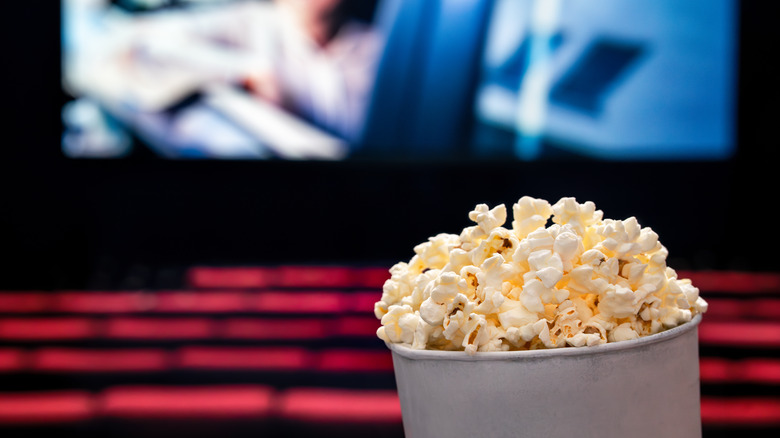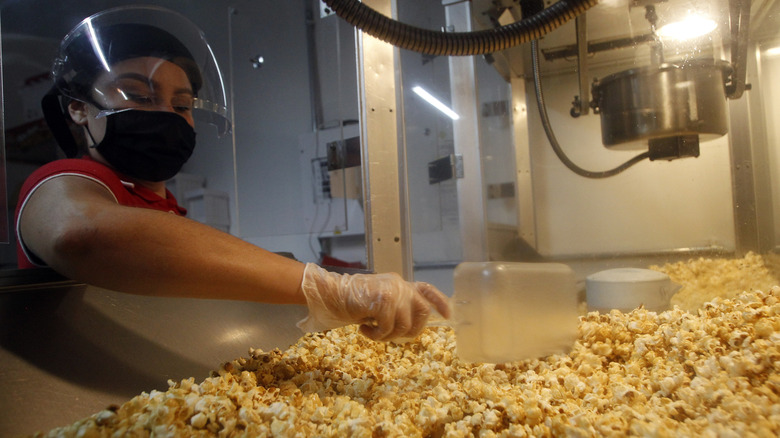How Popcorn Became The Definitive Movie Theater Snack
Going to the cinema is nearly synonymous with eating a big bucket of salty, perfectly-buttered popcorn (or perhaps with some extra toppings if you're at a more gourmet cinema). Sure, you can usually buy all sorts of treats like chips and chocolate from a cinema's snack bar, but it's probably fair to say that popcorn dominates. Even the smell of it is arguably inextricable from the whole experience. But why did popcorn assume this position as a classic movie food in place of other snacks?
The short answer is economics: Popcorn is cheap — historically, cinemas don't have to spend much money on it, and therefore customers could have it as an affordable snack (while allowing cinemas to make some profit). It was both the ingredients and the equipment that made popcorn cheap: While popcorn does actually require a specific starchier variety of corn (which is also called popcorn) and can't be made with just any old type of corn kernel, it was still a low-cost product, and a big bag would last vendors a seriously long time. The invention of a steam-powered popcorn maker in 1885 helped, too: It didn't require a full kitchen, while other snacks like potato chips did. This turned popcorn into a popular snack at outdoor settings like circuses, which were considered entertainment for the masses. Yet, it initially stayed out of cinemas and was even frowned upon — it was only around the time of the Great Depression that it truly became a cinema staple.
How popcorn made it into cinemas
When cinema started taking off around the 1910s and '20s, it was actually considered a middle-to-upper class form of entertainment. During the silent movie era, only educated, literate people could properly enjoy cinema, as it required audiences to read captions and title cards.
Correspondingly, the cinemas themselves were lavish and luxurious destinations, and — a bit like going to the theater in the present day — they weren't places you ate in (it was often forbidden), with owners not wanting to have the interiors ruined by crumbs and trash. Plus, the sound of people chowing down on crunchy snacks during silent movies was not desirable.
Two things changed this. Firstly, the introduction of sound made movies a form of mass entertainment, with no reading abilities required. People migrated from circuses to cinemas, and mobile popcorn vendors followed, initially setting up shop outside cinemas. The other factor was the Great Depression. Americans' limited funds meant that more affordable luxuries really took off, and both cinemas and popcorn fit the bill here. Cinemas initially resisted, but people kept bringing popcorn, often sneaking it in, so cinemas progressively allowed popcorn vendors to sell in their lobbies in exchange for a cut of the profits. By the '40s, cinemas took over selling popcorn themselves. Ever since, it's a beloved part of the filmgoing experience — and with innovations like microwave popcorn, it's one that people have taken home with them, too.

